Introduction
We wanted to get away somewhere Roman for the weekend – so what better place to go than the Raetian Limes in Southern Germany? We flew to Munich, then drove to Weißenburg on Saturday and Aalen on the Sunday, which gave us five interesting – indeed outstanding – sites to review. So here’s our first review: the Limes Centre and Museum in Weißenburg.
We first visited Weissenburg’s Roman sites in 1991, just after they had opened the cover building for the baths and built a reconstruction of the north gate. In fact, it was a picture of that gate in all its glory, illustrating a brochure of B&Bs in Southern Germany, which originally attracted us to visit Weißenburg.
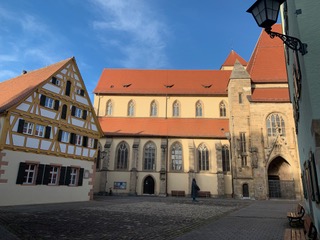
Weißenburg is a prosperous small manufacturing town in Middle Franconia, now part of Northern Bavaria, with a beautifully preserved historic centre, nice cafés and a remarkable Roman history. It was one of those fascinating micro-states – a free Imperial City from the late Middle Ages until Napoleon ended the Holy Roman Empire.
Biriciana was one of the largest forts on the Raetian Limes, the land frontier stretching from the Danube at Eining, running roughly along the watershed, and meeting the north/south Upper German Limes at Lorch. The fort – 3 hectares in size – was garrisoned from Trajanic times by the Ala I Hispanorum, a cavalry unit of approximately 500 troopers.
There are three Roman Sites to see in Weißenburg:
- The fort site with reconstructed gate
- The Baths
- The Museum and Limes Visitor Centre.

There’s so much to enjoy – so we will just cover the Museum here and then post separately on the Fort and the Baths.
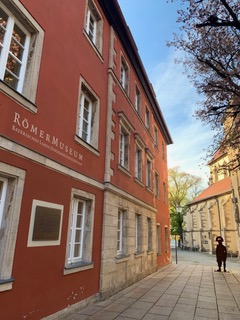
The Museum
Overall: **** 4 stars – Excellent Limes Museum focusing on the Raetian Limes, with outstanding finds from the Weißenburg vicus. A must-see if you are in Bavaria.
Roman Features: **** 4 stars – The impact of the display of votives had stuck with us from 1991! Nowhere we know of has something like this and the statuettes are also unique – and here we are right on the edge of the Roman World!
Display: **** 4 stars – Very good (with just one nitpick – the spotlights on the votives were out of order, meaning the silver does not currently gleam as it does in our memories!) The other finds, including the helmets, are well displayed and the explanation of the context of the Raetian Limes and its garrison is outstanding.
Reconstructions: * 1 star – The ground floor auxiliaries are dressed up manikins (which is always slightly weird) and the perspex models are fine but don’t add much to one’s understanding.
Access: *** 3 stars – A well-converted historic building with a lift. Some display areas dark (for atmosphere). Captions mainly in German (unlike some Limes sites). No obvious parking nearby.
Atmosphere: **** 4 stars – The top floor displays are highly atmospheric.
Other *** 3 stars – There is some useful material on the Raetian Limes on the ground floor. The Museum has just published a top-notch guide (in German) to its collections which has fine photos graphs, maps and graphics; which add context. There is the usual rack of leaflets on other Roman sites, but not as much as we had hoped for.
You really have to see Weißenburg if you can!
Since we visited in 1991, the Museum has greatly expanded and secured recognition as the Bavarian Limes Visitor Centre. This has resulted in some expensive (but not particularly informative) displays on the ground floor, with the obligatory manikins dressed up as Roman auxiliary cavalry and infantry. There are some rather nice site models. But the reason you are here is upstairs – it amazed us nearly 30 years ago and amazed us again now!
We had very high expectations about this latest visit, having last been here in 1991 – attracted by the reconstructed Gate, then a bit of an exotic rarity even in Germany! A lasting memory was the display of silver votives of great delicacy shining in their display cases in a rather quaint and (back in those days) seemingly low security museum.
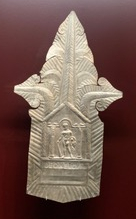
Weißenburg Fort was founded as a cavalry fort, probably in Trajan’s reign when the frontier moved north from the Danube to the watershed between the Danube and the Main. (Intriguingly, this is where Charlemagne planned the first canal to connect the Rhine and Danube.). Together with the whole Raetian frontier, Weißenburg fell – or was given up – in 264AD. During its occupation, an extensive vicus grew up on the west side with a major set of baths to serve the well-paid Auxiliary Cavalry troopers – more about this site in a later blog.
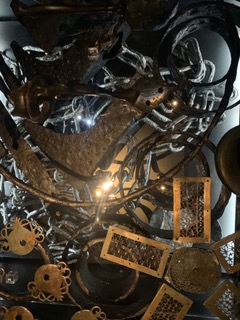
That the abandonment of the Limes and their forts was a sudden, violent and dramatic occurrence is shown by the deposit of many valuable objects in a box buried in the main street of the Vicus. Fortunately the contents of the box weren’t found until 1979 when the votives, statuettes and other objects were scientifically excavated and preserved. There are various theories about the reason for it being there – temple offerings, everybodies’ valuables or even a trader’s stock in trade.
These finds form the star exhibits at the Weißenburg Museum where the three top rooms on the 3rd floor display the votives and statues with dramatic lighting. The first room contains displays about the campaigns of the 3rd Century and the demonstrate of the Raetian Limes in 254AD.
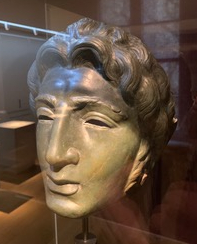

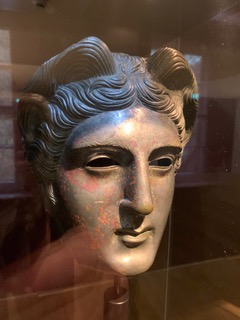
The three sports helmets with face-masks in the central room are particularly striking and well displayed. The Roman cavalry auxiliaries practised evolutions like the Cantabrian Circle using sports equipment – face masks like these and spears without heads – to demonstrate their skills. The ‘teams’ were thought to be Trojans, Alexander and Amazons. These convey the wealth, sophistication and effortless superiority of the Roman cavalry. As in the 19th Century these cavalry regiments clearly saw themselves as superior to the auxiliary infantry and, indeed, all ranks of a cavalry Ala received about a third more pay than their equivalent in a Roman Legion!
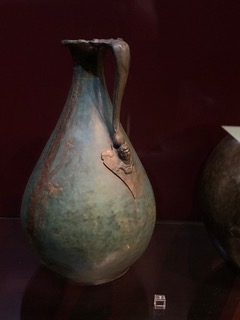

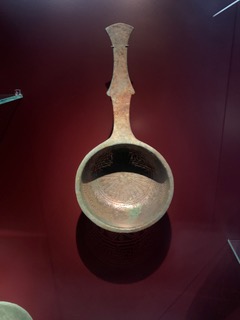
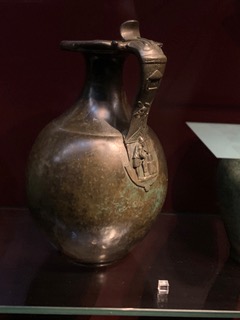
These are high-quality finds from the Hoard.
The room on the right, with subdued lighting, contains all the pots and pans that were found in the buried chest with the helmets. These are also of the finest quality and in a wonderful state of preservation, and show the very high level of material culture in the vicus of Biriciana. You surely would not put these items in the ground if you had some way to take them with you – so the strong inference must be that the Roman citizens of Biriciana had very little time to leave when the end came!
The room on the left contains the votives and statuettes in an almost religious display. They do not disappoint!

The statuettes are of Roman household gods and – given we are here on the very edge of the Empire – they are of staggering quality and delicacy. The feature Venus, Juno, Vulcan, Mercury and other members of the Roman pantheon.

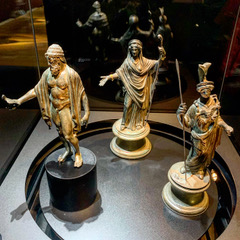
The votives are, for us, the stars of the show, largely because we have never seen their equal in quantity and quality. They are of extreme delicacy, made out of beaten silver alloy, and appear to have been dedicated in the household shrine for particular events or in thanksgiving.

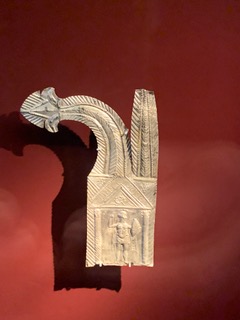
As a build-up to this dramatic climax, galleries set out the history of the Limes with some excellent graphics on the forts occupied in 160AD and their garrisons.
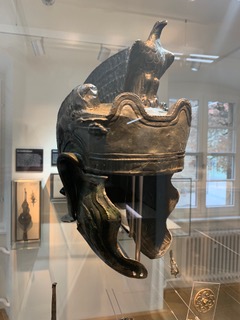
Other galleries feature key finds from the forts at Weißenburg displayed in thematic form – the soldiers’ equipment and armour, the countryside, and other topics. It’s all done very well and spaciously.
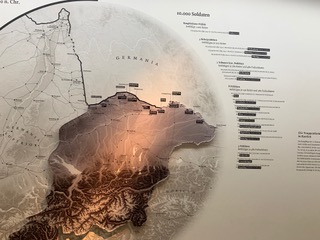
The only disappointment is the ground floor where there are displays about World Heritage Sites – the Limes, like Hadrian’s Wall, is one – and lifesize auxiliary infantry and cavalryman, plus some perspex models of key sites which somehow don’t quite come to life.

The Limes book shop is just nearby in an excellent combined café and bookshop. There you can enjoy a Bavarian chocolate and cream cake and a coffee whilst contemplating the modern statue of Martin Luther outside the Church. (No mistaking which side the Imperial City of Weißenburg was on in the Reformation.)

